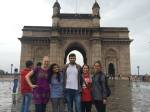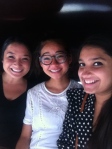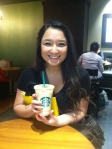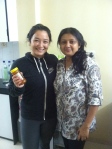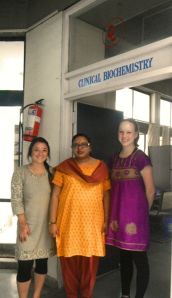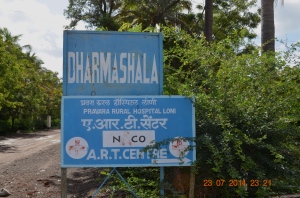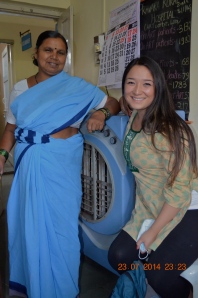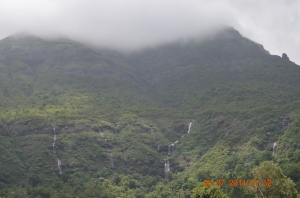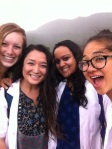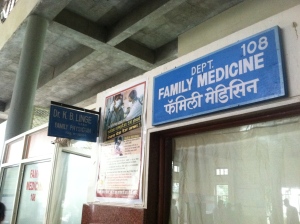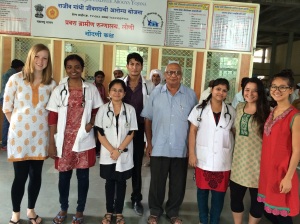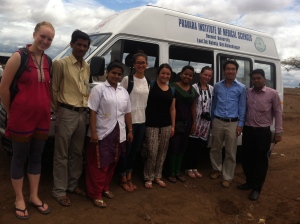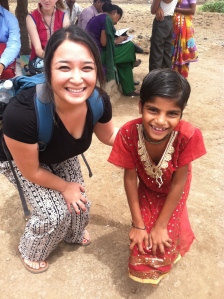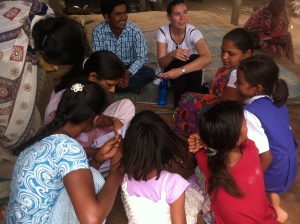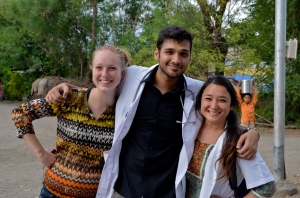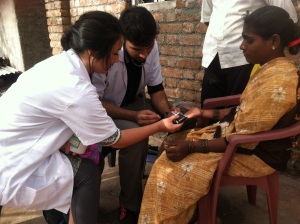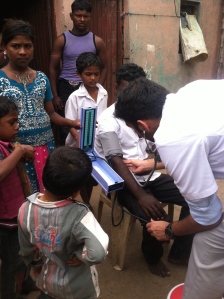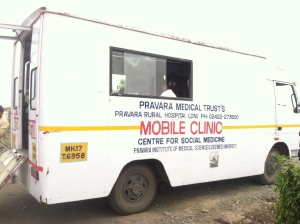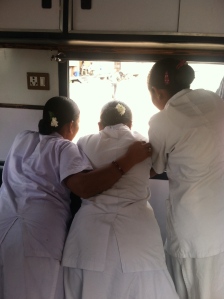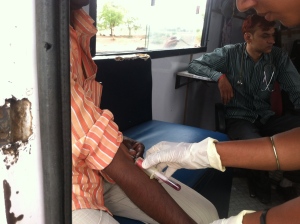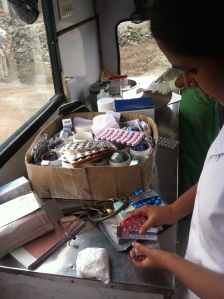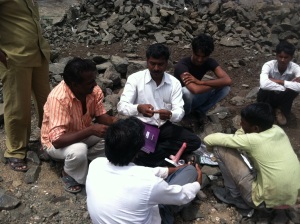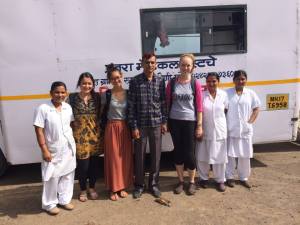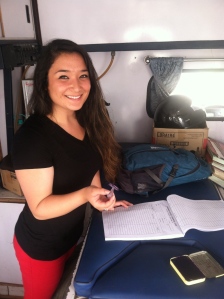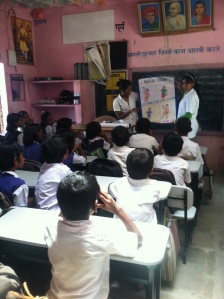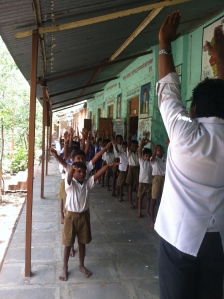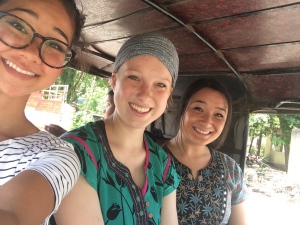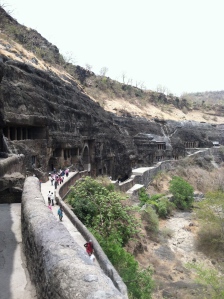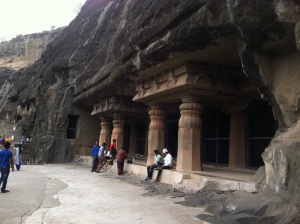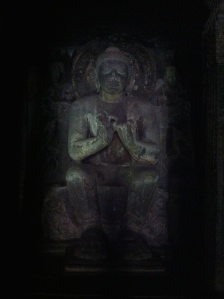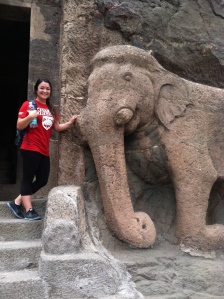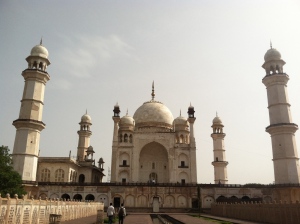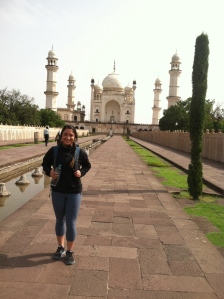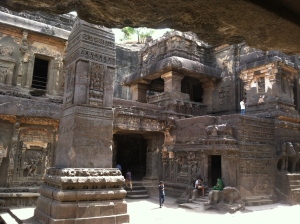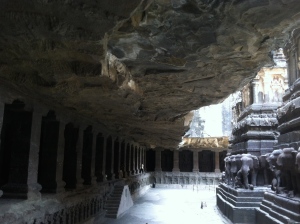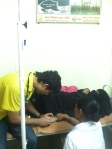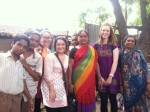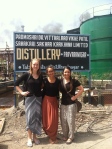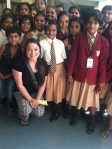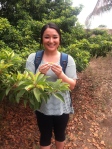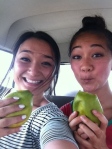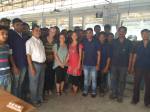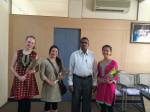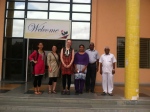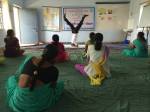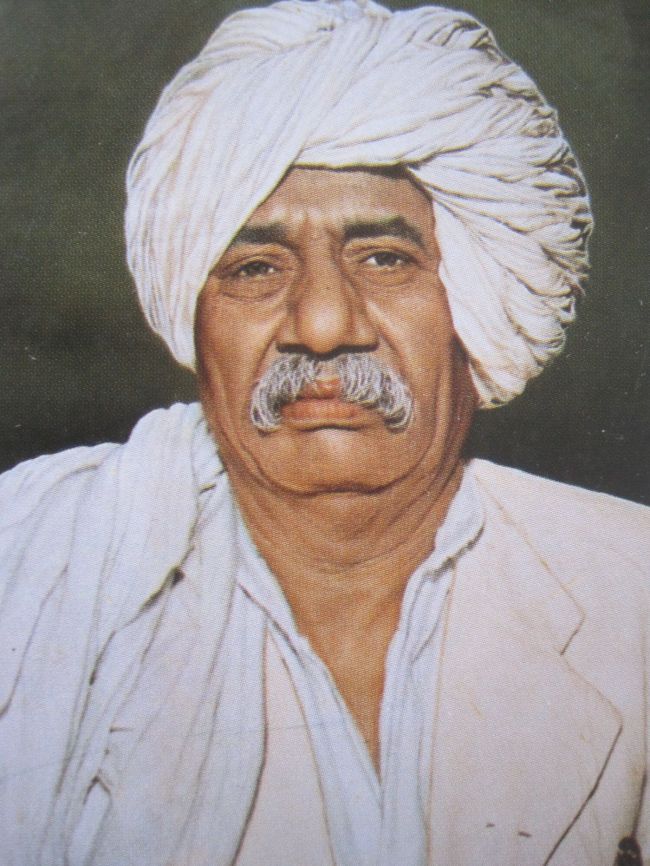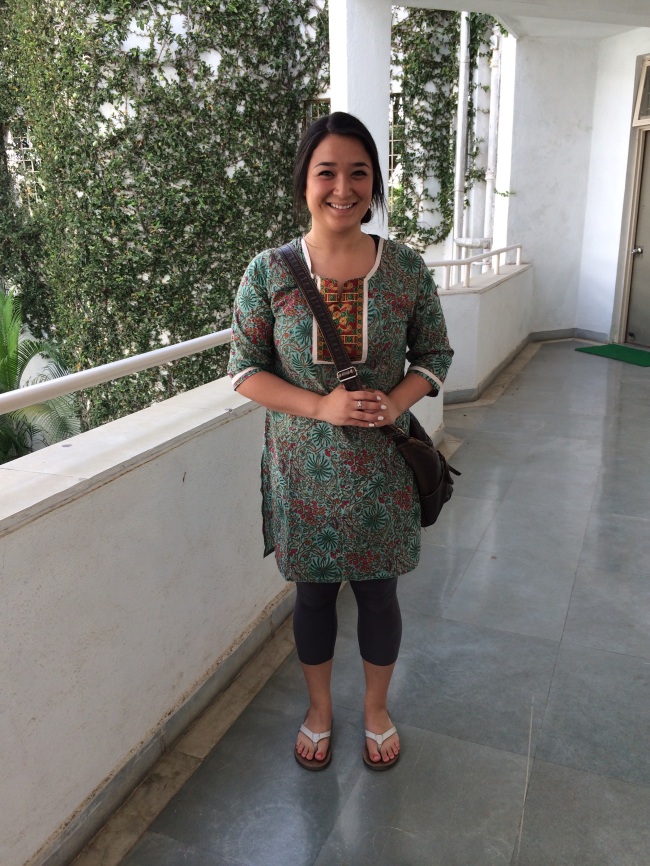This last weekend Peyton, Kylie and I went home with our friend Isha to Mumbai for the weekend. It was kind of a spur of the moment decision after canceling our initial plan to Goa because of the weather forecast being 100% chances of thunder and lightening storms. Turns out Goa had beautiful weather that weekend and Mumbai was pouring, often times flooding the streets. Regardless of the weather conditions I am so thankful we made the decision to travel home with Isha. We spent the weekend eating homemade food and exploring her city. From street shopping to seeing the “Gateway of India” we were able to get a slight taste of the city life which was a refreshing change after being surrounded by rural villages for a month.
Our mode of transportation for our 7 hour journey to Mumbai would be a sleeper bus. I have never really been on a public transit bus in the States, so you can only image my anxiety regarding a “sleeper” bus in India. Surprisingly it was great! Because all of my germ-a-phobe tendencies have gone out the door along time ago I didn’t mind the fact that the pillows and sheets were ready made (unclean) and the bus was set up as if every row were bunk beds. Isha and I were on the top and Kylie and Peyton were right below us. After talking with Ishas friends who were also going home for the weekend on one of their bunks we returned to our own to try and get some sleep before our big weekend in the city. I covered my pillow with my jacket, curled up with the shawl the Isha brought for me to sleep with and when I woke up we were in Mumbai. We left Loni at around 10:30pm on Friday and we arrived in Mumbai at around 5am tired and hungry. We took a rickshaw from the bus stop to Ishas home where we met her family and ate the best home cooked breakfast I’ve had in a very long time. Saturday was Ishas moms birthday we so we were able to celebrate with her and the rest of their family and later family friends.
The rest of the week consisted of good food, family time at home playing games and learning “Indian poker” and adventures in the city visiting the queens necklace on marine drive, the Gateway of India and one of the highlights of our trip street shopping. While street shopping Isha taught us the technique to bargaining which will hopefully come in handy our last week as we travel around India by ourselves.
The trip to the city to go street shopping was an experience in itself. We took the public railway which is so crowded it is easy to loose each other in the shuffle. When the reached the platform where we would be catching the train Isha told us to push our way on when the train comes. I didn’t really know what she meant by that until our train pulled up with people hanging out all sides. As the train was coming to a stop people were flooding out climbing over one another as other people were simultaneously pushing their way on. Literally pushing each other on or off. Now the train stops for maybe a few seconds before it takes off again so it was very chaotic to say the least. A little panicked we opted to wait for the next train. Now a little more prepared we waited and as the train came to a stop we pushed our way on, myself first, then Kylie, then Peyton as I looked back the train started moving with Ishas head no where in sight, after a few moments of shear panic I saw her smiling face. Instantly relieved we all made it on the train we found a seat and rode the train to Colaba Cauwsy.
Overall our weekend in Mumbai was the best one I’ve had here in India. I am so thankful to Isha and her family for taking us in and treating us so well. I felt so comfortable immediately after meeting her family, which made for a very enjoyable weekend. I was able to stay up late and talk with her parents as they shared stories and their family photo albums. If I’m ever in Mumbai again their home will be my first stop.



